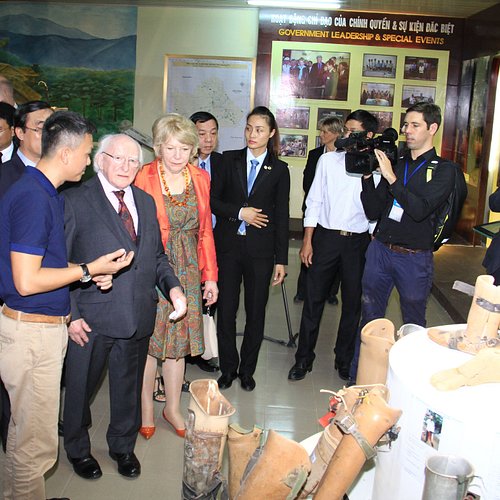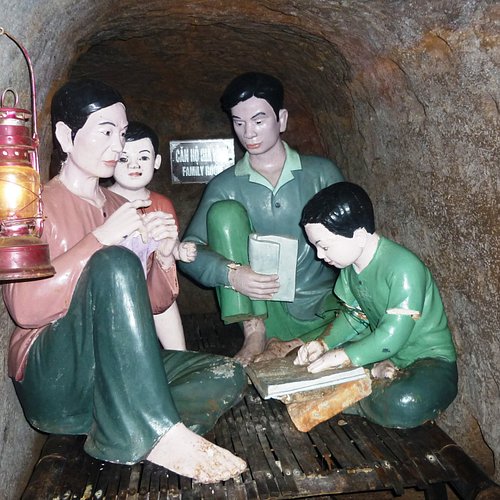The 6 Best Budget-friendly Things to do in Dong Ha, Quang Tri Province
Đông Hà ( listen) is the capital of Quảng Trị Province, Vietnam. Đông Hà is situated at the crossroads of National Highway 1A and Route 9, part of the East–West Economic Corridor (EWEC). It lies on the North–South Railway (Reunification Express) and is served by Đông Hà Railway Station. EWEC is an economic development program which includes northeast Thailand, Southern Laos, and central Vietnam.
Restaurants in Dong Ha
1. Tam's Cafe
Overall Ratings
5.0 based on 103 reviews

Restaurant, Veteran-led DMZ tours, Rider adventure tours to the DMZ, Guest house
2. Vina DMZ Travel
Overall Ratings
5.0 based on 43 reviews

DMZ tour, Phong Nha cave, Paradise cave, Dark Cave, Botanical Garden, Khe Sanh combat base, Vinh Moc tunnel, Truong Son Cemetery, Rockpile, Camp Carroll, Ho Chi Minh trail, Quang Tri citadel, La Vang Cathedral, Hamburger Hill, Hue imperial citadel, Thien Mu pagoda, royal tombs and temples, Da Nang, My Khe beach, Monkey mountain, Golden Bridge, Ba Na Hills, Linh Ung pagoda, Marble Mountain, Cham Islands, Hoi An ancient town, My Son sanctuary, My Lai massacre site, Kon Tum, Dakto, Pleiku, Buon Ma Thuot, Quy Nhon, Ninh Binh, Vinh, Ha Tinh
3. Lang Mai Travel
Overall Ratings
5.0 based on 16 reviews

Lang Mai Travel specializes in organizing tours in Vietnam, especially: DMZ Tours, Hue City Tours, Hoi An City Tours, My Son Sanctuary Tours, Phong Nha Cave Tours, Paradise Cave Tours, Dark Cave Tours and Trang An Tours... Everyday, we pick up our guests at the following cities: Dong Ha (Quang Tri Province), Hue (Thua Thien – Hue), Hoi An (Quang Nam), Dong Hoi (Quang Binh) and Ninh Binh.
4. Mine Action Visitor Center
Overall Ratings
4.5 based on 61 reviews
Located in Dong Ha City, Quang Tri Province, Vietnam with easy access for tourist buses, the Center serves as an ideal quick-stop for international and national DMZ visitors to refresh before continuing their journey to former areas of operations and other historic relics in Quang Tri province. Visitors to the Center will view exhibits, documentaries, images, and facts and figures that depict the fierceness of the war and its devastating impact on the land and people of Quang Tri. Tourists and students, veterans delegations and others will learn about efforts of government authorities, local residents, and international organizations to address the Explosive Remnants of War or ERW problem since the war ended. Visitors will also be provided opportunities to contribute to mine action activities that help the people and the land of Quang Tri continue on their path of recovery, after enduring many years of pain and loss from the war. The Center is open from 08:00 a.M. To 05:00 p.M. On weekdays, on weekend days, please contact in advance for visit arrangement. No admission fees will be charged.
Reviewed By dimmydat
20 percent of Vietnam is thought to be contaminated with unexploded ordinance from the US, China, Soviet Union, France, and Japan. Over 40,000 killed and 60,000 injured from 1975 - 2007. Children pick up cluster bombs because they look like balls. Scrap metal sellers and farmers are killed, and people live in fear. Orphanages are full of the victims of Agent Orange, now in the 3rd and 4th generation. Mr. Nguyen Thanh Phu, who manages the Mine Action Visitor Center took the time to explain all this to me and the work he and his team are doing together with international NGOs in clearing and disposing the ordinance, documenting and mapping incidents, and educating people in Quang Tri province on what they can do to reduce risk and stay safe. And they help the victims of Agent Orange. The goal is for Quang Tri province to be safe by 2025 and then replicate the best practices across Vietnam. If you are in the DMZ, the Mine Action Visitor Center is a must-visit.
5. Vinh Moc Tunnel
Overall Ratings
4.5 based on 357 reviews
Reviewed By Cookiewankanobi - Colombo, Sri Lanka
Since I'm not American, or Vietnamese, I didn't want to waste a whole day seeing other sites significant to the war. I just thought it's fascinating that a village went underground and wanted to see the tunnels, and the bridge connecting north and south vietnam. So, I got a private car (more expensive, but totally reasonable if you find 2 or 3 others to split with you!) So glad I went to the tunnels WITHOUT a tour company because I was able to take my sweet time and also get there in the morning before it was busy. In tour you spend maybe 40 mins. I took my time exploring all the tunnels (brought my own headlamp) and watching the documentary afterwards, looking at the museum over 3 hours or so, as well as a walk along the sea where the tunnels come out. I have to say as a solo person I got a bit scared in the tunnels as there were no other people (around 10-noon) and I went down tunnels that didn't have any lights since I had my own light. But it felt very quiet and very dark so it would have been nice to have a friend! Overall amazing feat of engineering and well worth the 2.5 hour drive from Hue. Also, it is amazingly cool and breezy in the tunnels thanks to their ventilation system so don't worry about the heat. Take your time to walk around and see the foxholes, bomb craters and museum. Bring your own light if you want to go out of the lit tunnels to explore more.
6. Dmz Tours
Overall Ratings
5.0 based on 174 reviews



